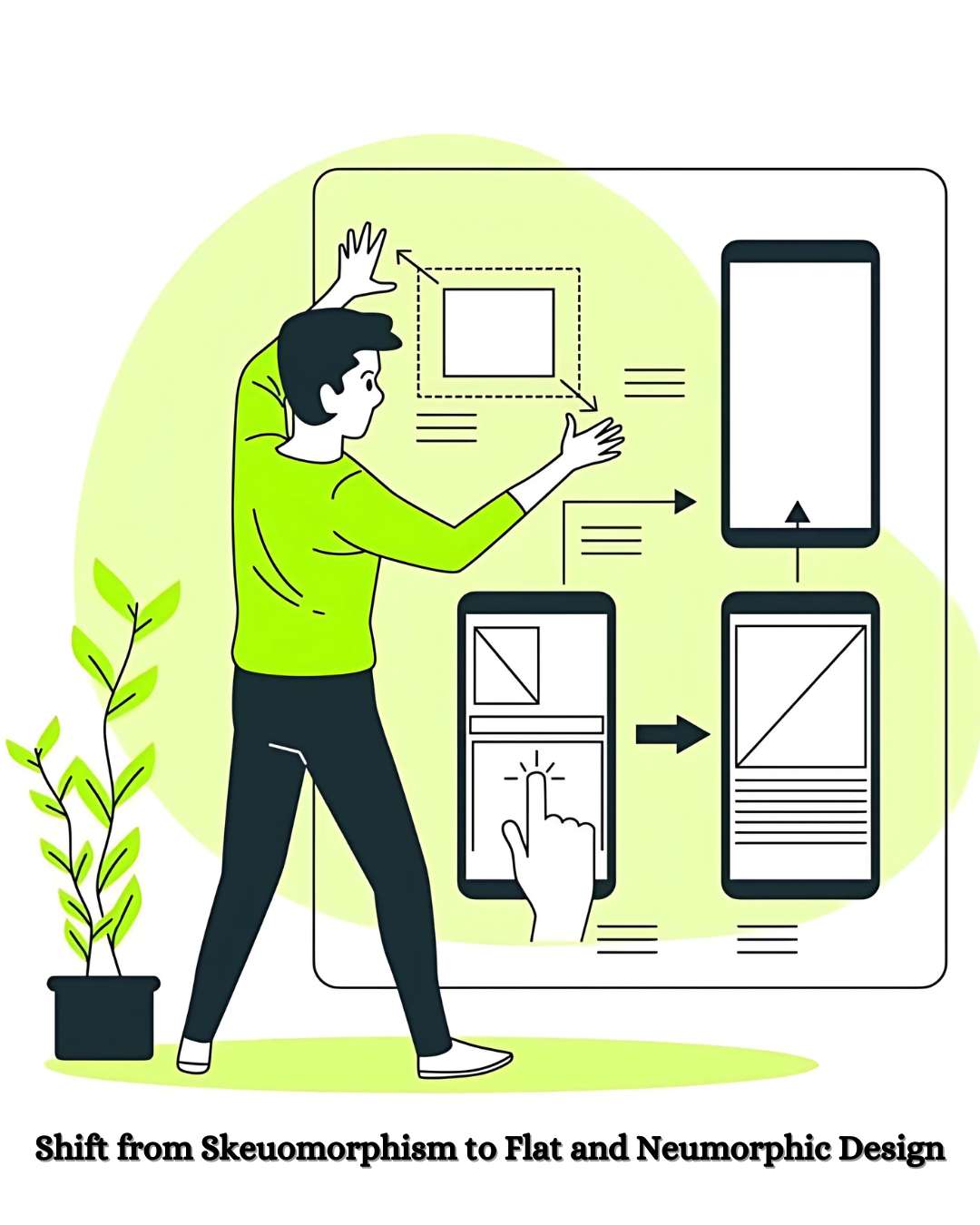The Shift from Skeuomorphism to Flat and Neumorphic Design
The face of UI design has witnessed immense changes in the last several decades. What began with realistic textures of skeuomorphism to the flat minimalist design to now the upsurging trend of neumorphism, reflects shifting user expectations as well as advancing technology. Therefore, this chapter is highly significant for any designer who aspires to deliver intuitive and aesthetic interfaces. For a well-categorized collection of animated icons for designing your website, check out Iconfair.
What is Skeuomorphism?
Skeuomorphism is a design approach that mimics real-world objects in digital interfaces. This style was dominant in early UI design, especially in the late 1990s and early 2000s, as it helped users transition from physical to digital environments by creating familiar visual cues.
Characteristics of Skeuomorphism
Realistic textures: Buttons, icons, and UI elements resemble real materials like leather, wood, and metal.
3D effects: Use of shadows, highlights, and gradients to create depth.
Literal representations: Digital objects closely resemble their physical counterparts (for example, the trash bin icon symbolizing the recycle bin on computers).
Benefits of Skeuomorphism
User-friendly interface: As elements resemble real-world objects, users learn to use them very fast.
Engagement: Rich visual details make it an engaging and immersive experience.
Easy digital adaptation: It helps non-tech-savvy users transition smoothly into digital interfaces.
The Rise of Flat Design
As technology evolved and mobile applications became a way of life, designers looked for a leaner and meaner alternative to it—flat design. It first appeared in the early 2010s through operating systems like Microsoft's Metro UI, Apple's iOS 7, and Google's Material Design. For ready-to-use accessible icons, visit IconFair.
Characteristics of Flat Design
Minimalist approach: Elimination of unnecessary textures, shadows, and gradients.
Bright colors and simple shapes: Makes it easier to read and understand.
Typography-focused: More focus on readability and organized structure.
Advantages of Flat Design
Better performance: Less complex graphics result in quicker loading times and smoother user experience.
Scalability: Flat elements work well on different screen sizes and resolutions.
Usability: A clean and clutter-free interface makes navigation easier.
The Rise of Neumorphism
Neumorphism, or "new skeuomorphism," was coined in 2019 as a way to blend the best aspects of both skeuomorphism and flat design. It adds subtle depth back to UI elements while keeping them clean and modern. For a more extensive collection of quality icons and illustrations to help with your design projects, consider visiting IconFair.
Characteristics of Neumorphism
Soft shadows and highlights: Elements appear extruded or embedded into the background, and this creates a pseudo-3D effect.
Monochromatic color schemes: Emphasis on smooth gradients, instead of having stark contrasts.
Minimalist but tactile UI: It brings together the simplicity of flat design and the realism of skeuomorphism.
Benefits of Neumorphism
Modern and visually appealing: The subtle and smooth depth enhances UI appeal
Improved accentuation of key elements: Important buttons and icons get highlighted through soft lighting effects.
Fresh user experience: A novel approach that differentiates products from competitors.
Practical Applications and Considerations
Selecting the Correct Design Style
For intuitive interfaces: Skeuomorphism is still helpful for applications where users need to feel familiar, like a banking app for seniors.
For performance-centric applications: Flat design is suitable for mobile apps and websites requiring high speed and efficiency
For new and innovative UIs: Neumorphism is excellent for adding a fresh look and visually appealing look for dashboards and creative projects.
Conclusion
Design trends in UI continues to change based on advancements in technology and evolution of user needs. From skeuomorphism to flat and now neumorphism, industry is always balancing aesthetics, usability, and performance. While each design has strengths and weaknesses and no single style is superior over the others, knowing these is what makes decisions for a design more informed of the needs best suited for each project. For further insights into UI and icon design trends, check out IconFair and explore an enormous collection of icons specifically designed for modern interfaces.
